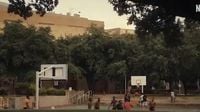In November 2021, Houston's NRG Park became the site of a devastating tragedy during the third Astroworld music festival, a two-day event headlined by rap superstar Travis Scott. Named after Scott's six-time platinum 2018 album, the festival was highly anticipated, especially after the 2020 edition was canceled due to the COVID-19 pandemic. Tens of thousands of young fans gathered, eager to reclaim the concert experience they had missed during lockdowns. However, what was meant to be a celebration of music and community turned into a nightmare that claimed 10 lives and injured hundreds more.
Netflix’s documentary, Trainwreck: The Astroworld Tragedy, released on June 10, 2025, offers a harrowing look into the events that led to the fatal crowd crush at the festival. It features interviews with survivors, emergency responders, crowd safety experts, and families of the victims, providing a comprehensive and chilling account of how the disaster unfolded and why it went unchecked for so long.
The festival, organized by Live Nation—America’s largest live event promoter—had expanded from a single day to two, with an ambitious lineup including stars like SZA, Bad Bunny, and Lil Baby. Yet beneath the surface, critical safety oversights were evident. Security guards Jackson and Samuel Bush were hired only hours before the festival began, and the main stage remained unoccupied all day, allowing fans to camp out in the scorching Houston sun. This setup funneled thousands of attendees toward the stage simultaneously from the same direction, creating a perfect storm for a deadly crowd crush.
As Scott took the stage at 9 p.m., the crowd surge rapidly worsened. On the left side of the stage, fans were funneled into a pen with no escape route, intensifying pressure against barriers. Cell phone footage captured inside this pen shows fans struggling to breathe and being crushed in real time, even as Scott’s performance blared on. Survivors like Sophia Santana recall the terrifying moments: “I just remember thinking, ‘Don’t fall down because you won’t make it back up.’”
Despite fans screaming for help, climbing to restricted areas to seek assistance, and calling police, the concert continued for nearly an hour after Scott began performing. Crowd safety expert Scott Davidson revealed in the documentary a startling transcript from the night: “We have four active CPRs going on. Two are most likely dead. It is very, very bad. There are more crush victims than I’ve ever seen in my 25-year career.” This urgent warning was communicated by a Live Nation manager to the audio engineer, who had the ability to alert Scott through his in-ear monitor.
“We have to have a discussion in his [Travis’] ears letting him know what’s going on. We need to shut this thing down in eight minutes at 10 o’clock,” the transcript continued. Yet, the show was not halted. Instead, Scott introduced Drake as a surprise guest, a decision that Davidson described as “insane” and “unprecedented.” He lamented, “Of all the things that trouble me about this case, that’s one thing I can’t get past. How could they make that decision?”
Former Houston Police commander Mark Lentini placed the blame squarely on the festival organizers rather than law enforcement, highlighting the predictability of chaos caused by unauthorized fence jumping and overcrowding. Meanwhile, Scott later claimed in a December 2021 interview with radio host Charlamagne tha God that he was unaware of the severity of the situation during his set and was not informed of the crisis through his earpiece.
Tragically, 10 people lost their lives from compression asphyxia—the inability to breathe due to extreme pressure from the crowd. Victims ranged in age from nine-year-old Ezra Blount to 27-year-old Danish Baig. Among them were Axel Acosta Avila (21), Madison Dubiski (23), John Hilgert (14), Jacob Jurinek (20), Franco Patino (21), Rodolfo “Rudy” Peña (23), Brianna Rodriguez (16), and Bharti Shahani (22). Families of several victims appear in the documentary, sharing their heartbreak and grief. Rudy Peña’s mother, Maria Peña, tearfully recounted receiving the devastating news: “They stole my heart. They stole a part of my heart. I couldn’t bear it. And so far, I still can’t.”
Beyond the fatalities, over 300 attendees were treated for injuries sustained during the crush, including some who suffered cardiac arrests. The scale of the disaster shocked emergency responders and the wider community alike.
In the immediate aftermath, Scott posted a video on Instagram expressing condolences and pledging support to victims’ families. “My fans really mean the world to me, and I always just really want to leave them with a positive experience,” he said. However, his response was met with criticism for lacking sufficient accountability, especially given that he continued performing for over 30 minutes after a mass casualty was declared and ambulances were seen in the crowd.
Legal consequences swiftly followed. Ten wrongful death lawsuits were filed against Scott, Live Nation, and other organizers, with many cases settled out of court under confidential terms. One such lawsuit, filed by attendee Manuel Souza, accused the festival of being motivated by profit “at the expense of concertgoers’ health and safety,” calling Astroworld a “predictable and preventable tragedy.” Meanwhile, Live Nation faced additional legal troubles, including a Department of Justice lawsuit for monopolizing the music industry and lawsuits stemming from other festival incidents.
Despite widespread public outrage and scrutiny, a grand jury in 2023 decided not to hold any individual criminally responsible for the tragedy. The Astroworld Festival itself has not been held since 2021.
“Trainwreck: The Astroworld Tragedy” stands as a sobering exploration of how a joyous event spiraled into disaster. Directed by Yemi Bamiro, the documentary uses firsthand accounts, expert analysis, and raw footage to uncover the failures in planning, communication, and response that culminated in the loss of young lives. It raises haunting questions: Why wasn’t the concert stopped sooner? Could the deaths have been prevented? And most unsettlingly, will such a tragedy happen again?
As the music world and fans continue to grapple with the aftermath, the documentary serves as a stark reminder of the paramount importance of crowd safety and accountability in live events. It challenges the industry to learn from this calamity and ensure that no more lives are lost in the pursuit of entertainment.


